Blogs
Manchester in a centrifuge tube
Learning to do 16S DNA analysis at Manchester University
As good geochemists, Melanie and Karel know the chemical reactions in their lake sediments very well. But if life did not exist, the dynamics of iron and phosphorus in any natural system would be very different from what we see now as the microbial community plays a crucial role in the cycling of the elements. The bacteria and archaea present in the soil and sediment feed on and produce chemical compounds. They can secrete and absorb dissolved compounds in and out of pore water, but also reduce or oxidize minerals, ions and organic matter. In short, without the large population of microbial life, our work would be pretty boring. But luckily, we have our diverse microbial communities and it is very interesting to examine whether the addition of iron to a freshwater lake leads to a change of them in the sediment. This knowledge could be crucial in understanding why or why not iron addition reduces phosphorus loading in surface water and how we can prevent eutrophication.
We reached out to our colleagues in Manchester to share some of their considerable expertise in geomicrobiology. After many preparatory meetings, booking train tickets and anxiously awaiting news of our frozen sediment samples, which had been held at UK customs for days, we finally arrived in the vibrant city of Manchester. Led by Prof Jon Lloyd’s experienced lab technician Chris Boothman, we learned how to extract DNA from our sediment samples, amplify it using polymerase chain reaction (PCR) and check that we extracted enough DNA to sequence using gel electrophoresis. Chris, knowledgeable as he is, gave us a lot of background information about the processes and showed us many tricks on how to work cleanly and efficiently.
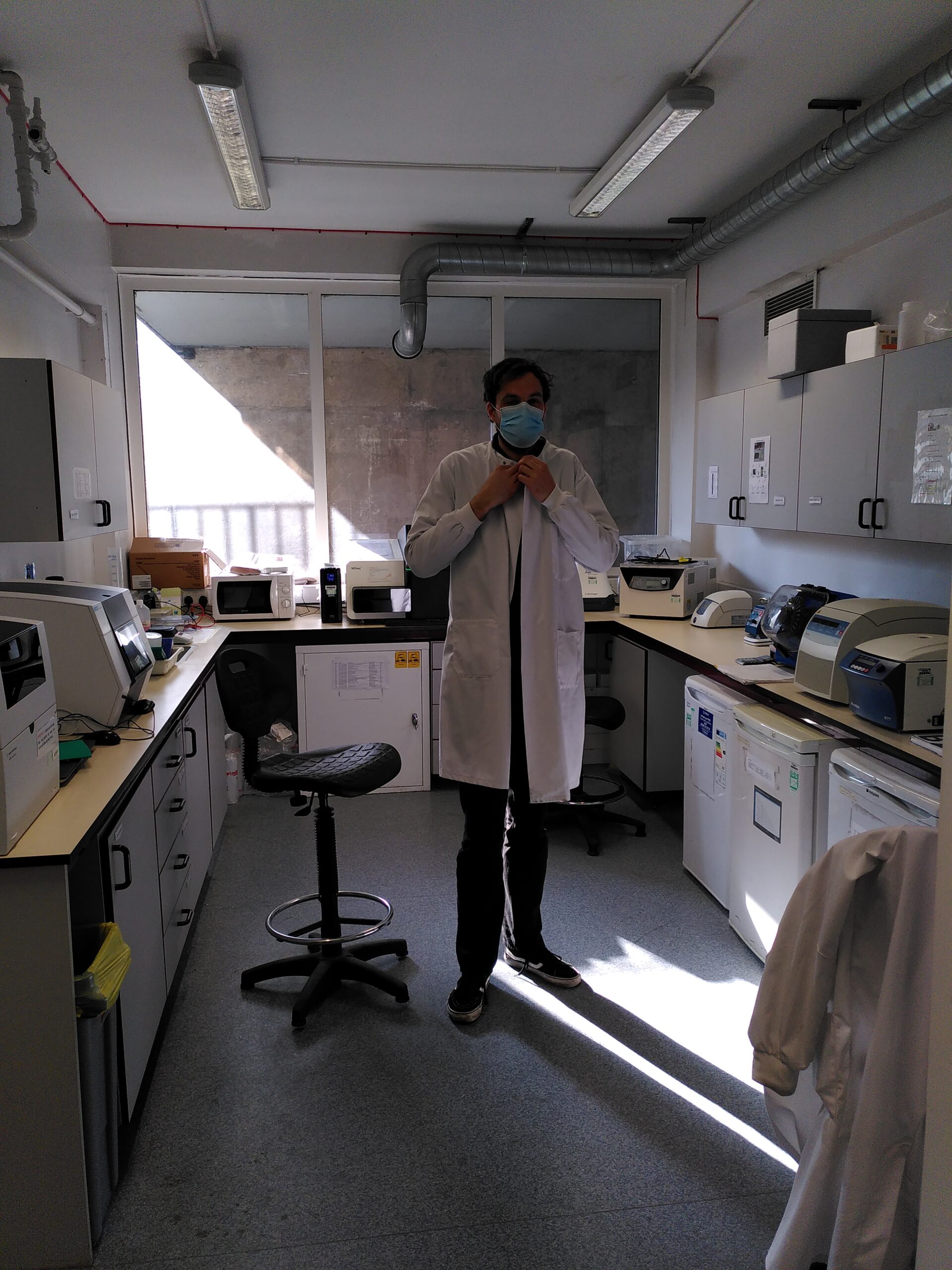 |
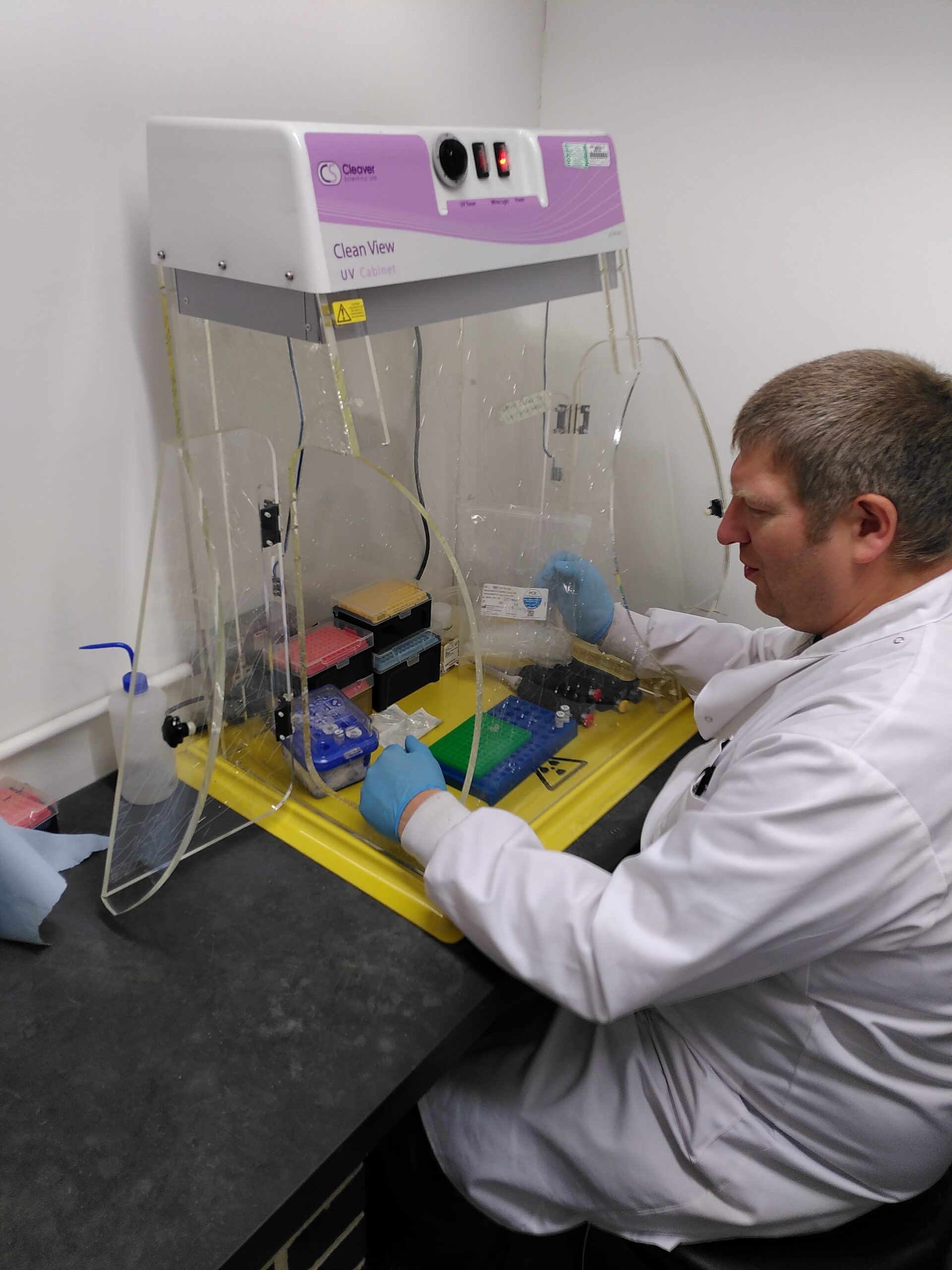 |
 |
|
Karel getting ready for lab work. |
Chris preparing the PCR in the clean hood. |
Chris checking the results of the gel electrophoresis. |
DNA coding for the 16S rRNA (ribosomal RNA) is used to identify the different classes of microbes. The ribosome is a cellular component that produces the main workhorses of the cell (enzymes). It does so by fitting RNA gene transcripts with the corresponding amino acids, which are the building blocks of enzymes. Hence ribosomes are very important for proper cell functioning. Changes in the ribosome quickly lead to dysfunctional cells. On evolutionary time-scales (100.000 to millions of years) change is slow, or to put it differently: conserved. This means changes in the sequence of this gene can be related to microbes on a genus/species level.
The gene sequences are read out using the fast and high through-put system called Illumina which works using fluorescent base-pairing. For each sample this results in many thousands of reads of different species. As Melanie brought in 48 samples and Karel 24 the amount of data can be quite overwhelming. Especially Melanie’s samples seemed beyond normal complexity. Or citing Chris Boothman: “ Melanie`s data in particular is one of the largest and most complicated sequencing data sets I have seen so far!“. Clearly, analysis of this data has to occur using specialized software. For this we received the lovely help of Natali Hernandez-Becerra, a PhD-student in the group of Jonathan Lloyd, who also showed us a great pizza bar for lunch. During the corona lockdown she has had the time to specialize in bio-informatics and has become the expert in the group. We were introduced to the software Qiime2, which allows to make beautiful bar plots and heatmaps to grasp better the complexity and specie-diversity in the samples.
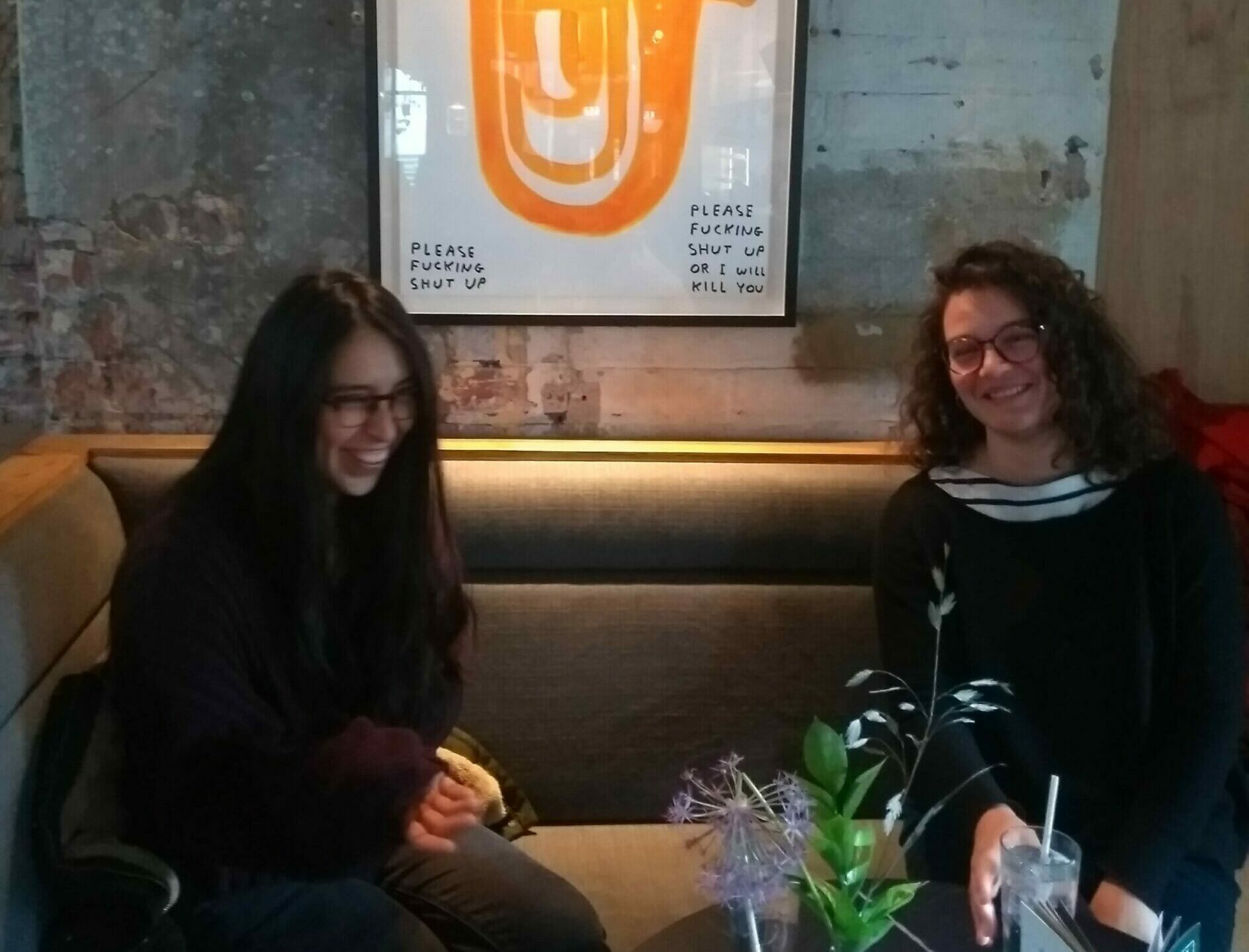 |
 |
|
Natali Hernandez-Becerra and Melanie Münch during lunch break |
Heatmap of 2 samples indicating different species abundance and variety. |
Another interesting question regarding the phosphorus dynamics in lakes is whether there are organisms present that are able to accumulate polyphosphate. Polyphosphate is polymerized phosphate that some microorganisms use to store phosphorus in little granules within their cells. You can think of them as the microbial equivalent of a storage cabinet with preserved goods for dire times. With specific stains and a good microscope, you can see these storage granules. Melanie suspects that polyphosphate accumulation could be a significant process in her sediment. Lynn Foster, a postdoctoral researcher in Jon’s group, was so kind as to share her microscopy experience to probe Melanie’s samples for polyphosphate granules using the DAPI staining method.
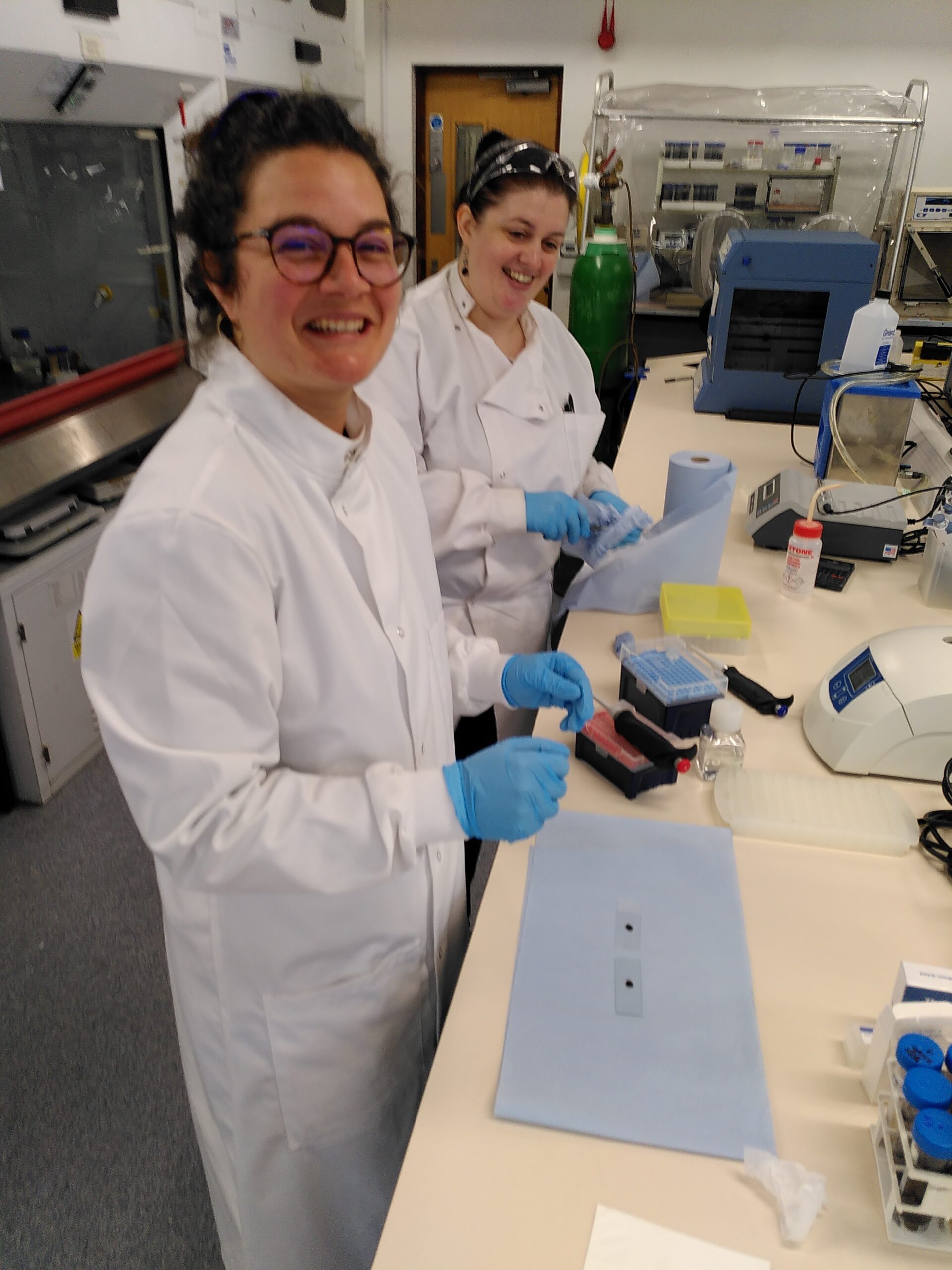 |
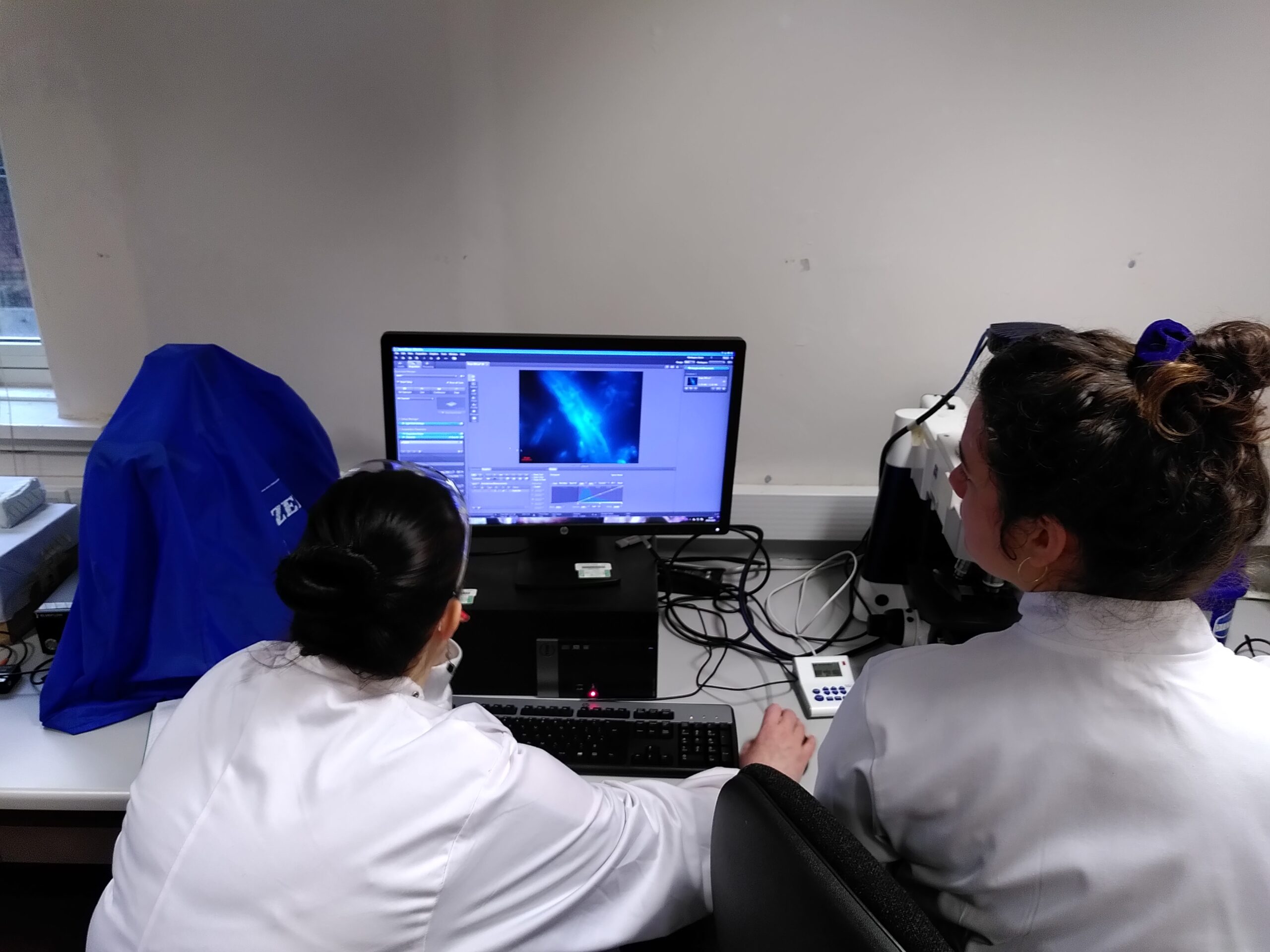
Above: Melanie and Lynn preparing sample slides for microscopy Left: Lynn and Melanie at work at the fluorescence microscope |
Even though we did not find the expected abundance of polyphosphate, we could observe bustling life moving through Melanies samples, even though they had been freeze-dried, ground under inert gas atmosphere and stored at -20°C (even -80°C for a few days). The resilience of microbes is astonishing every time. However, we also saw big junks of the sediment stained yellow by the DAPI. Melanie suspects this to be adsorbed phosphate, but she will need to dig into literature for better interpretation. Nevertheless, it was a lot of fun to see the life in our samples and we even found some nematodes and diatoms.
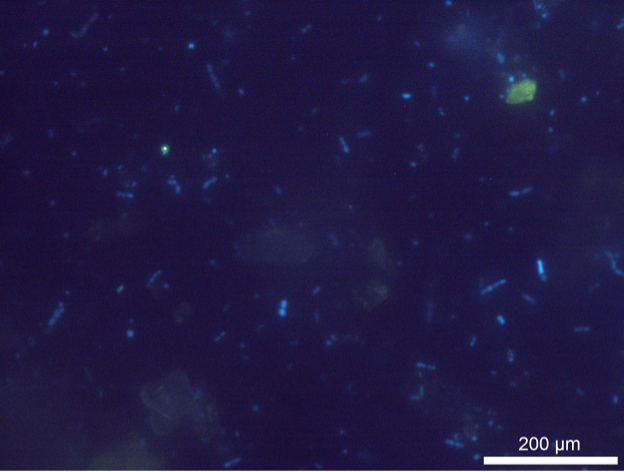
Above: Fluorescence microscopy picture of one Melanies sediment samples. Blue shapes represent bacteria as the DAPI stain makes their cell walls fluoresce in blue. The one bright yellow spot in the top left quadrant could be a cell with accumulated polyphosphate. The bigger yellowish junk in the top right quadrant could be a mineral particle with adsorbed phosphate. Right: Picture taken for fun with the cell phone through the ocular of the microscope. The red structure is most probably a nematode. |
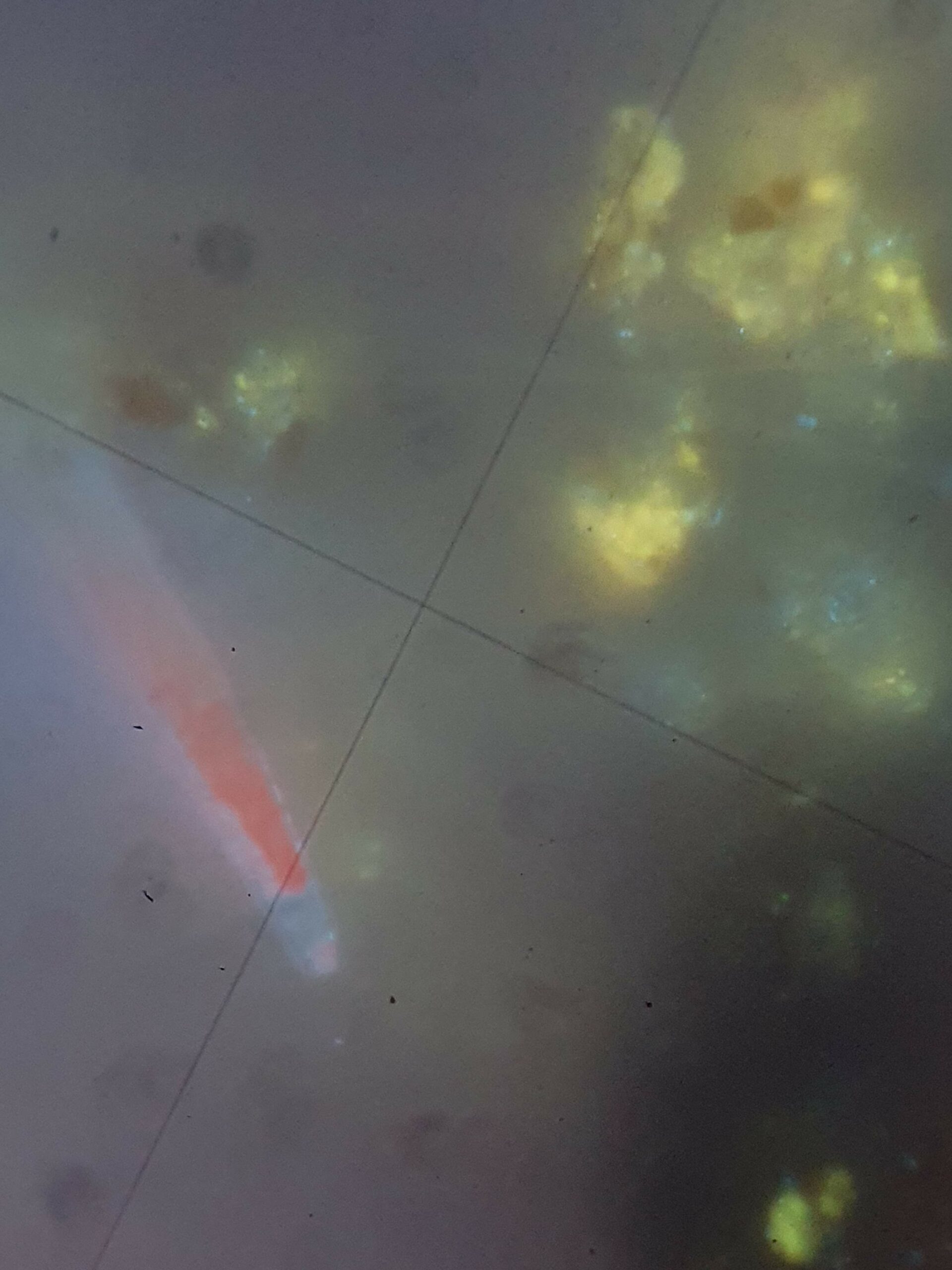 |
Next to our scientific adventures we took the opportunity to explore Manchester. As the cradle of industrialization and some might even say capitalism itself, the city is full of impressive Victorian buildings and features whole neighbourhoods of former factories as a well as a network of canals used to ship goods in the past. As in many old-industrial towns these old factory areas have seen a big revival in recent decades with many new restaurants and hip stores setting up shop here. Manchester is no different and one of its areas, Ancoats is deemed the 20th coolest neighbourhood in the world. Considering the number of neighbourhoods in the world this is no small feat.
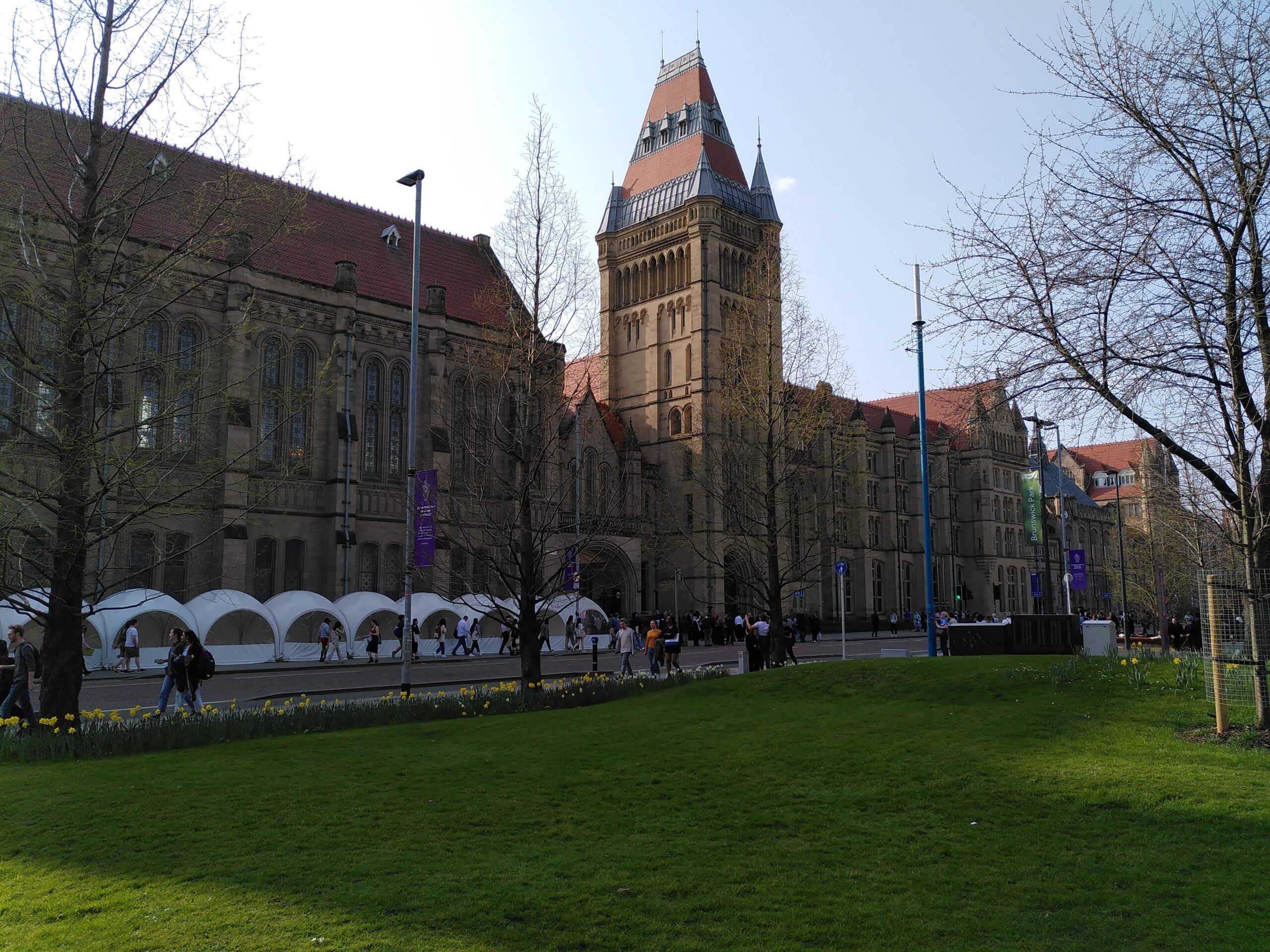 |
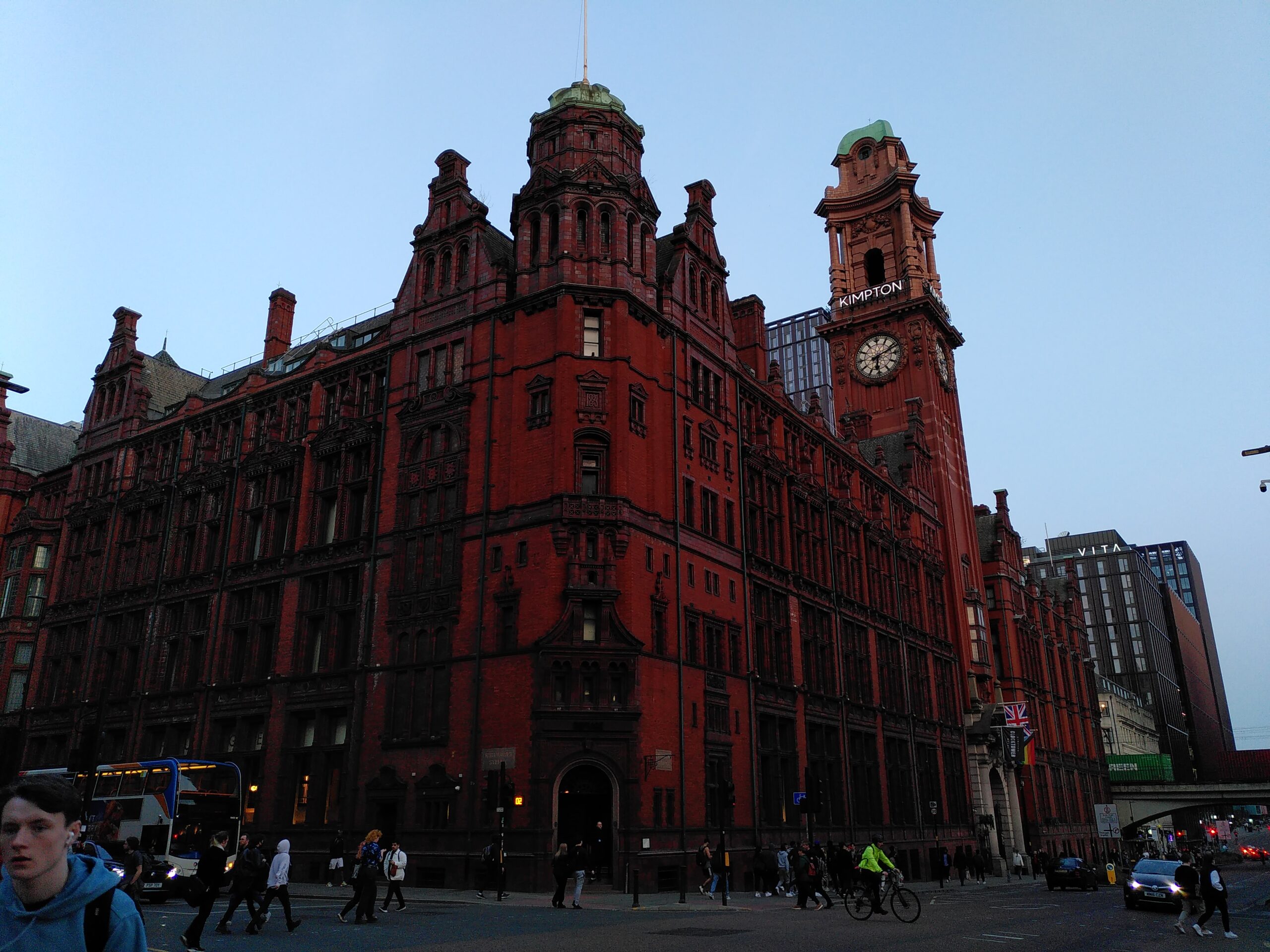 |
|
Manchester University |
The former Refuge Assurance Company, now housing an award-winning restaurant (which we of course had to sample). |
In the weekend and after work we had the chance to see Manchester which we enjoyed a lot. We tasted typically English food such as Fish and Chips, Sunday roast and mash and pies. Also, as Manchester is quite a multi-cultural city, cuisine from all over the world is available. One of our favorite restaurants was a Chinese restaurant where we went to with Prof. Jonathan Lloyd. Another great thing about secondments, apart from seeing a new city, is seeing our colleagues of the P-TRAP network. In this case we were able to meet Lordina who has not been able join any in-person meetings due to the corona epidemic. It was great to spend time together and get to know each other better. Hopefully there will be other opportunities soon!
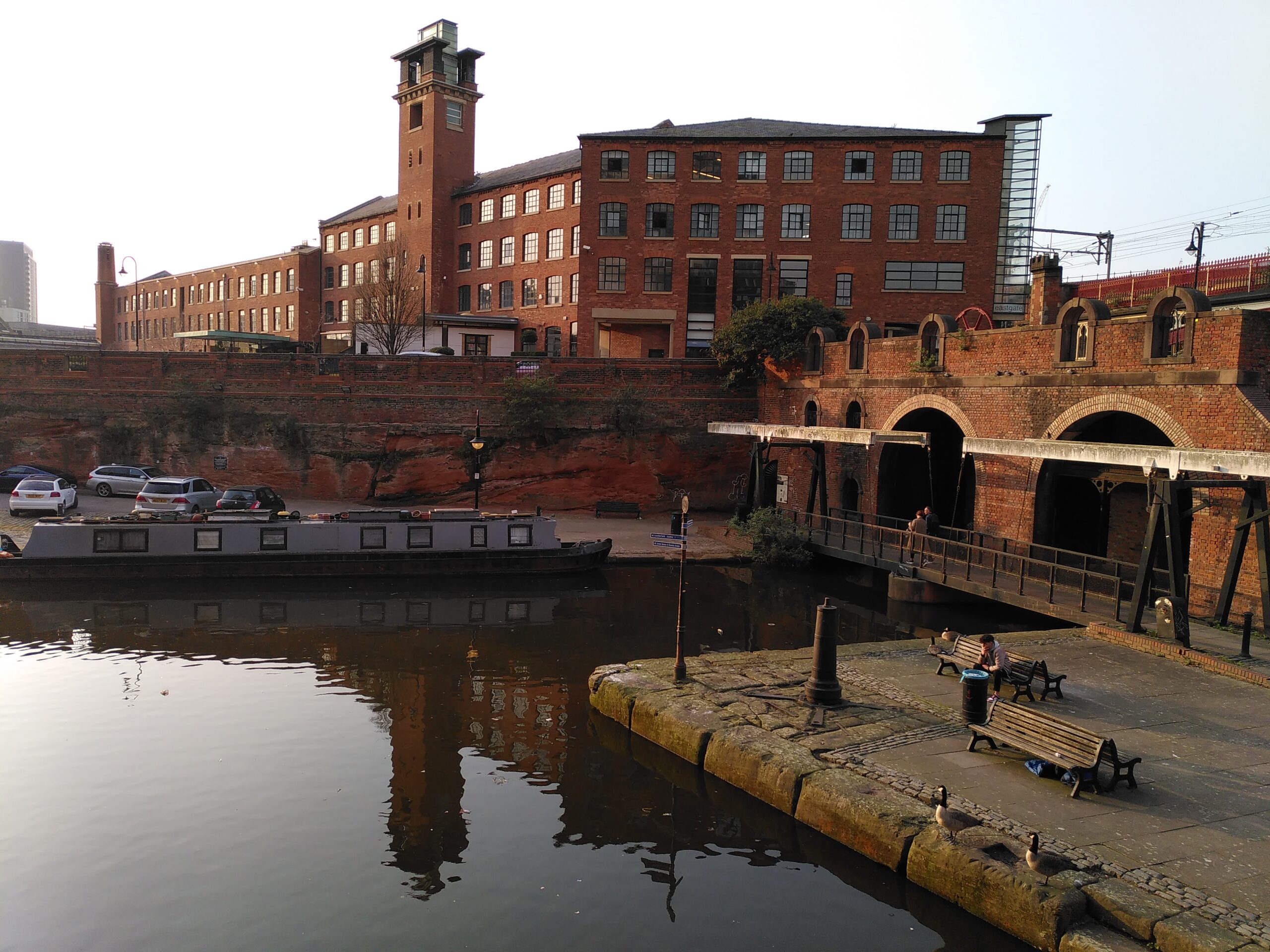 |
 |
|
Former factory and shipping canals at Castlefield Basin in Deansgate |
Former warehouse of the Great Northern Railway Company, now a leisure complex |
Apart from the cuisine we were also able to visit the People’s History Museum: The national museum of democracy in Manchester. Early capitalism and industrialization were characterized by a strong increase of inequality and a shift in power to the elites. In the early years working conditions in Manchester’s many factories were rather miserable and the museum displays a nuanced account of the violent history of repression and the response of the lower classes in labour, civil and women rights movements. Over time the recognition of oppressed classes has spread to include immigrants, refugees and LGBTQX people. This museum showed the long struggle that led to improved rights for working-class people. Even more importantly, it reminded us that we with our good living and working conditions stand on the shoulders of many brave women and men, who wouldn’t simply take no for an answer.
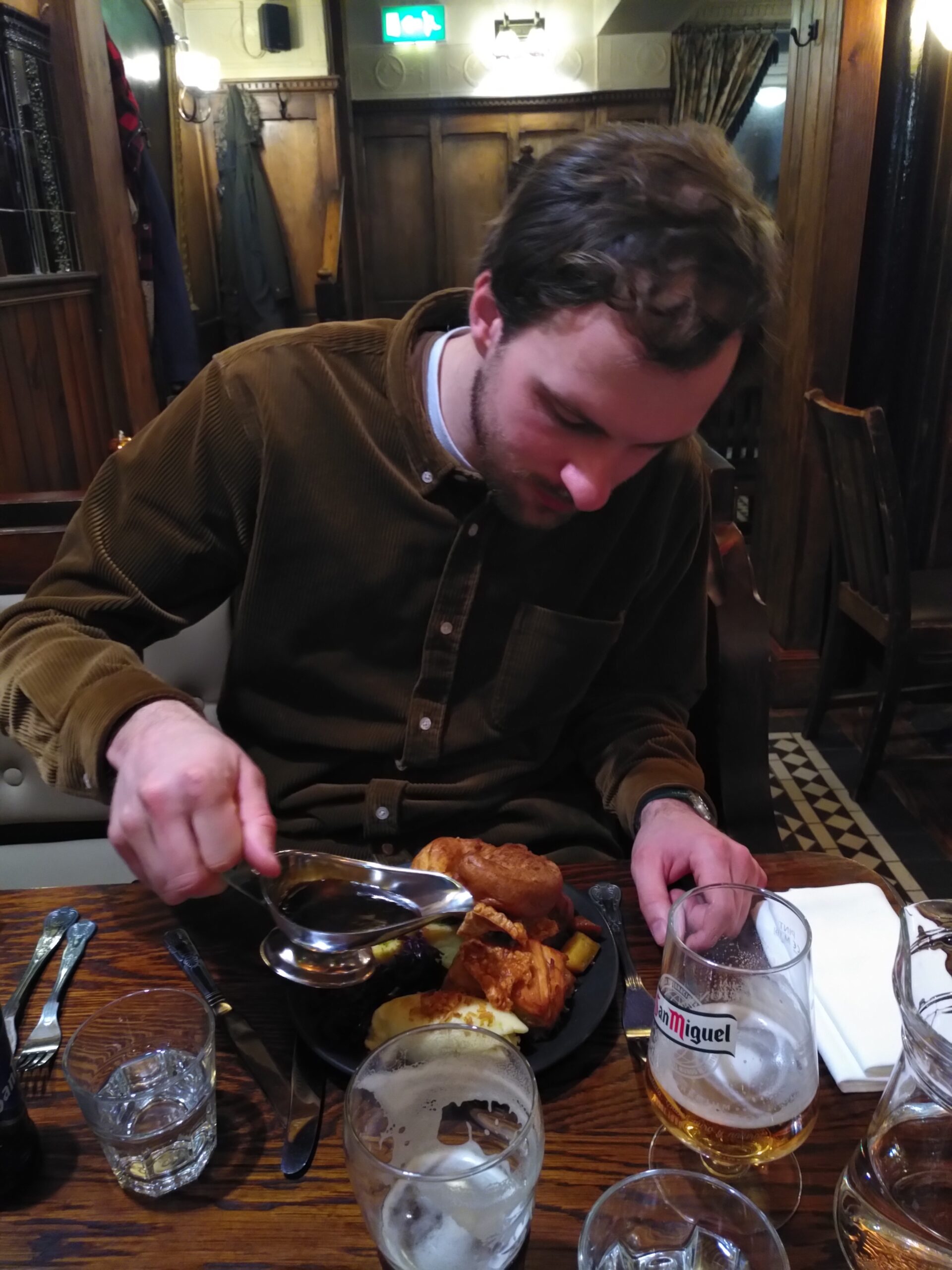 |
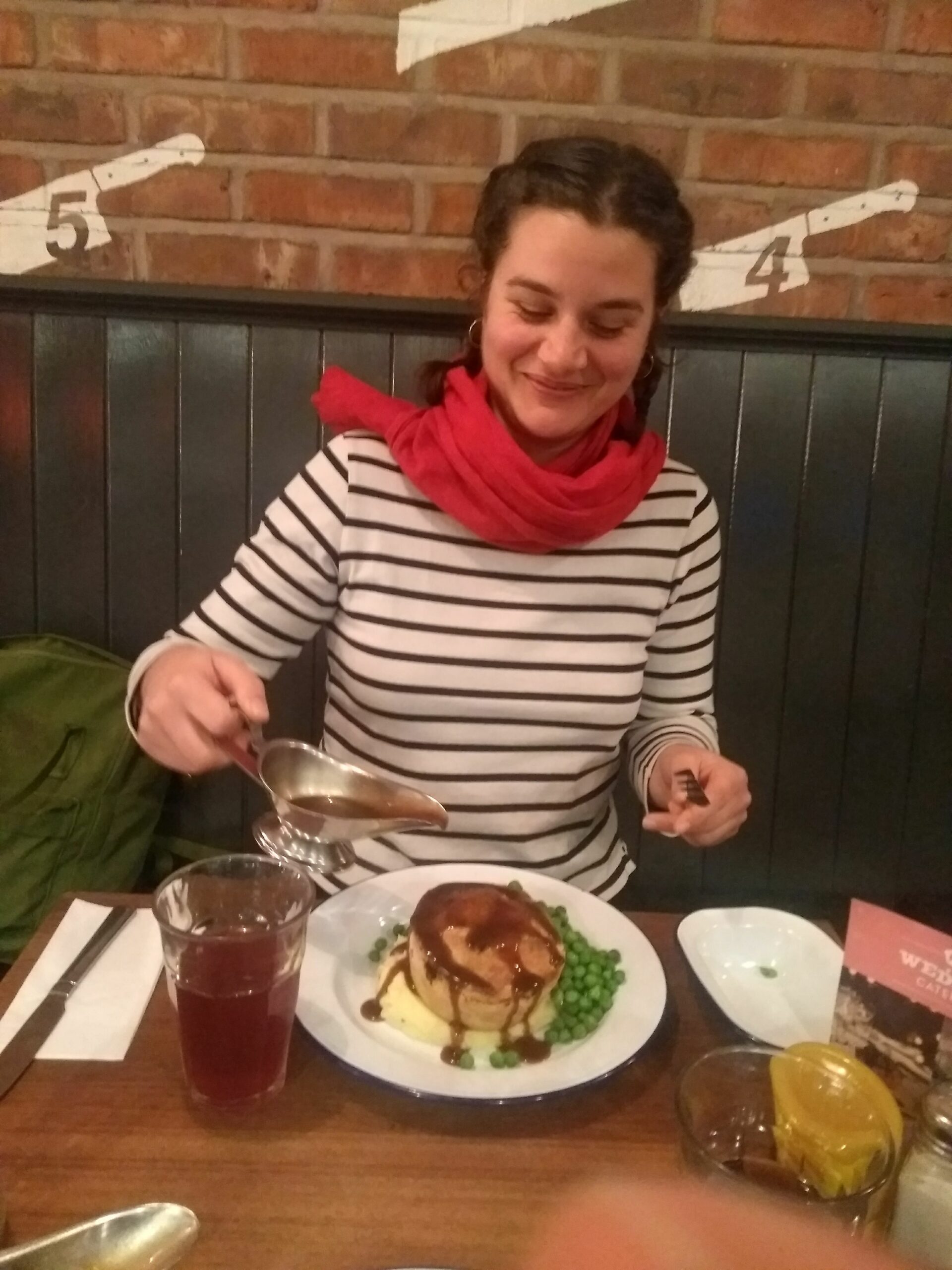 |
|
Sampling the local cuisine. Karel is digging into a Sunday roast at a traditional chophouse, Melanie is looking forward to her apparently award-winning vegan jackfruit pie. In any case, there is never enough gravy… |
|
Our visit to Manchester has taught us a lot in the field of environmental microbiology and provided a great opportunity to meet our colleagues. Also, we have learned a lot about the cultural and industrial legacy of the post-industrial town of Manchester. A very successful secondment indeed!
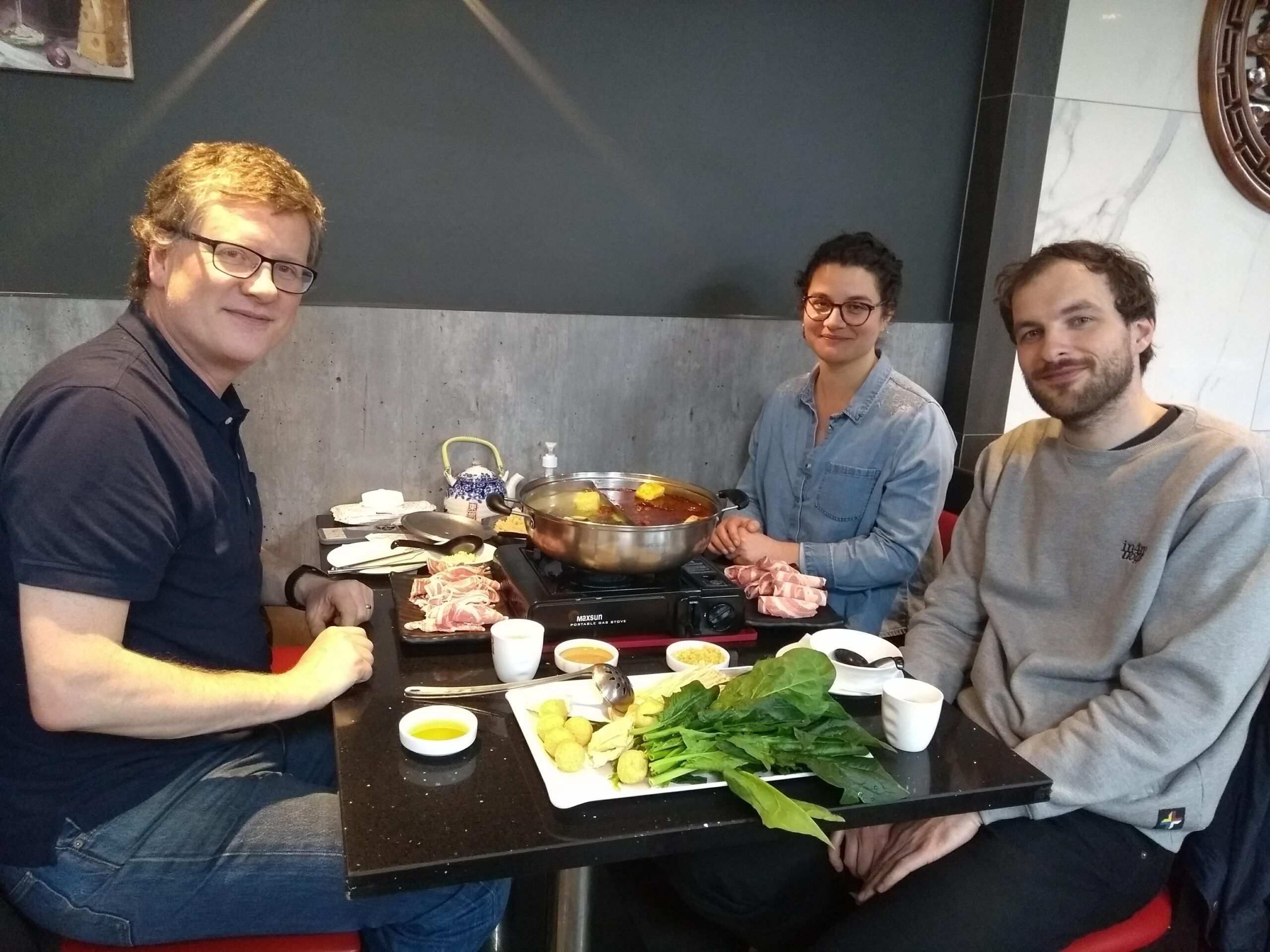 |
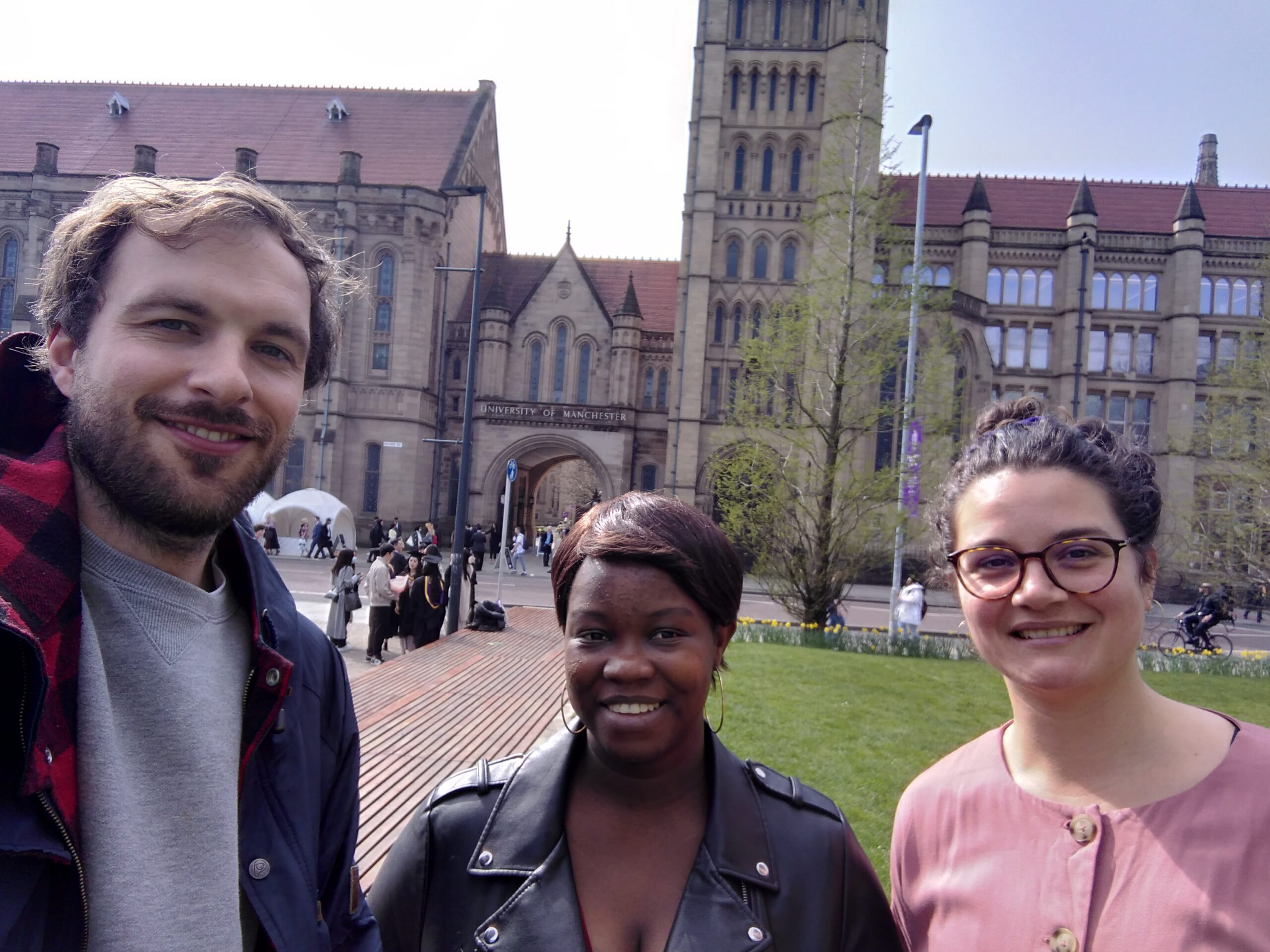 |
|
Eating Chinese hot pot with Professor Jonathan Lloyd. |
Finally! We met Lordina (ESR 11) in person after 2 years of online meetings! |

